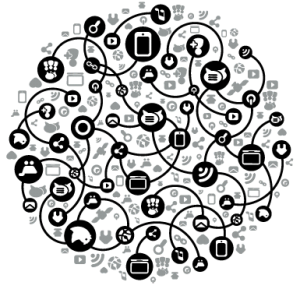 The Indian Government is increasingly coming closer to its citizens and businesses. Power brokers who would work their way through the Government system are giving way to professionals who help the masses to connect with their Government through a digital system. Three big digitization programs are taking place: (1) identity of Indians, (2) interaction portals of Government agencies and (3) money transactions (cash and property). The changes are transforming the way Indians and its Government interact.
The Indian Government is increasingly coming closer to its citizens and businesses. Power brokers who would work their way through the Government system are giving way to professionals who help the masses to connect with their Government through a digital system. Three big digitization programs are taking place: (1) identity of Indians, (2) interaction portals of Government agencies and (3) money transactions (cash and property). The changes are transforming the way Indians and its Government interact.
We’ll explain these initiatives beginning with 1) G2B and G2C interactions, 2) Citizens e-Records & Rights 3) e-Tax and e-Cash.
G2B and G2C – Govt to Business / Govt to Citizens
India, which has emerged as the global hub of the IT industry, has been late in leveraging IT for local governance. A virtual world where both interaction and money are digitized makes the task of making the government accountable much easier. Government services in general – is progressively being made easier as (1) the digitization of identities of Indians, (2) their online access to the service-provider institutions (financial and with Government agencies) and (3) the spread of the internet and mobile phones moves ahead rapidly. Digitalization of money coupled with the digitization of information (such as identities, and entitlements) make for a formidable combination.
Why is digital governance important?
A digital existence, which is easier to verify and/or prove, can eliminate issues of ghost beneficiaries and lost existences. Digital records are portable across the country, and unlike its paper cousin, changes made in digital records can be tracked more easily. Authorities responsible for delivery can be accessed, issues escalated and resolutions recorded and later made public, if required. Digitization will make it easier to track important changes in the structure and prosperity of the Indian population—its demographics, education, skilling, migration, assetownership, taxability and consumption patterns will be readily available for analysis and policy making.
Where have the interactions improved?
Some of the areas which have seen significant change in G2B and G2C interactions in India are as below.

Out of 34 mn people who filed taxes in India in FY2013, some 22 mn (or about two-thirds) filed online. Filing a paper-based tax return used to be accompanied by long delays in assessments and refunds. In FY2012, Indian Railways booked 116 mn tickets, amounting to ~Rs95 bn, with the daily run-rate now going beyond 0.4 mn tickets. Any Citizen can check how many cylinders
have been consumed and what the subsidy by the Government is: Indian Oil, HPCL and BPCL all have their own “transparency portals” with many details. Various state governments (like Chhattisgarh, Karnataka, Uttar Pradesh among the larger states) which have digitized land records. From the perspective of industry, this will make way for easier land acquisition.
Digitization is not a panacea for the ills of Corrupt Politicians, Bureaucracy and Red tape, in India or anywhere else; it however does provide meaningful advantages. There can still be willful errors of omission and commission in designing of benefit schemes or a restriction of access to relevant auctions. The solutions in many cases will be (1) further digitization, (2) open access to Government services and (3) release of electronic data on transactions / interactions.
In the next part we’ll explain the Citizens e-Records & Rights.